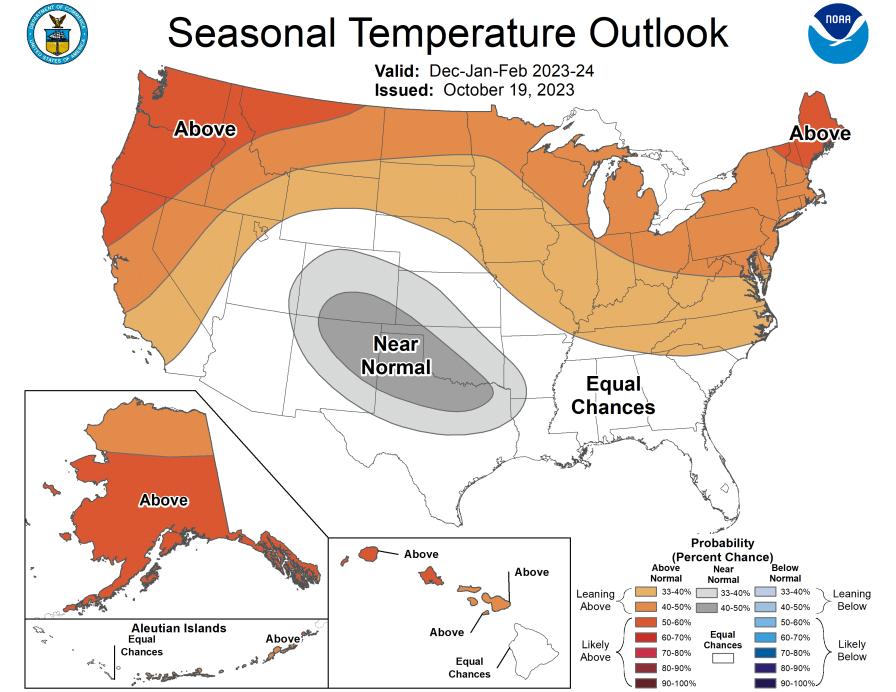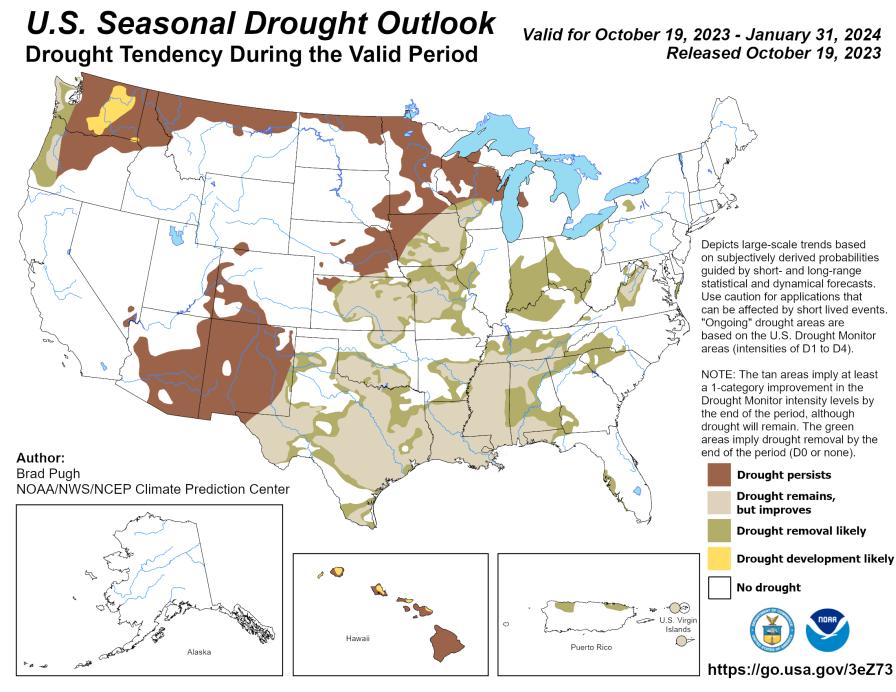El Niño Is Back! What This Means for Winter 2023-2024 Weather
Don’t look now, but another winter 2023-2024 forecast has been released. This time, NOAA has thrown its hat into the ring of wintertime predictions. Like others that have preceded it, presence of the El Niño climate phase is the biggest factor in what’s to come.
It’s been a few years (four to be exact) since El Niño has taken the driver’s seat from its sister La Niña. Both climate siblings are notorious for influencing weather patterns, including temperature, precipitation, tropical activity, and more. What does this El Niño mean for NOAA’s Winter 2023-2024 forecast? In a nutshell: “Wetter in the South; warmer in the North.”
Precipitation Predictions
From December through February, NOAA predicts wetter-than-average conditions for northern Alaska, portions of the West, the southern Plains, Southeast, Gulf Coast, and lower mid-Atlantic. Drier-than-average conditions are likely across the northern tier of the U.S., especially in the northern Rockies and High Plains, and near the Great Lakes.

“An enhanced southern jet stream and associated moisture often present during strong El Niño events supports high odds for above-average precipitation for the Gulf Coast, lower Mississippi Valley, and Southeast states this winter,” says Jon Gottschalck, Chief of the Operational Prediction Branch of the Climate Prediction Center, in the report.
Temperature Tidbits
NOAA’s Winter 2023-2024 forecast summarizes with these key points when it comes to expected temperatures across the U.S.
- Warmer-than-average temperatures are favored across the northern tier of the U.S. and much of the Far West.
- The greatest odds for warmer-than-average conditions are in Alaska, the Pacific Northwest, and northern New England.
- Near-normal seasonal mean temperatures are most likely for a region from the south-central Rockies to the southern Plains.
- Remaining areas fall into the category of equal chances for below-, near-, or above-average seasonal mean temperatures.

Speaking of temperatures, 2023 is fixing to be the world’s warmest on record, according to NOAA. That’s 174 years in the making! This should not be a surprise to many as reports of abnormally warm weather on land and in the oceans have been abundant.
RELATED CONTENT: Farmers Almanacs Vs. Modern Science: Which Winter 2023-2024 Forecast Will Win Out?
What About Drought?
California finally received a break from devastating drought this year — thanks to multiple atmospheric river events. But there are other areas of concern around the country.
- Widespread extreme to exceptional drought continues to persist across much of the South and portions of the central U.S.
- Drought conditions are expected to improve across the Southeast, the Gulf Coast (including the lower Mississippi Valley), and Texas due to the expected wetter-than-average forecast.
- Drought conditions are expected to persist for the northern Rockies, northern Great Plains, and portions of the desert Southwest this winter.
- Drought development could occur in the interior Pacific Northwest given the chance for drier-than-average conditions.
- Drought is likely to persist or develop across Hawaii.

So, how long will El Niño stick around this time? AgroClimate, which sites the International Research Institute for Climate and Society, says there is a 76% chance El Niño stays put for at least the next three months. It remains to be seen just how strong this El Niño phase will be. The stronger influence means a stronger jet stream, which could mean more chances for weather extremes. The last “strong” El Niño occurred 2015 going into spring 2016.
Weather is fickle though. It can and will surprise. History tells us a lot about patterns. El Niño normally means less tropical activity in the Atlantic basin. This Atlantic hurricane season, however, is now the fourth most active on record.
Hmmm. Patterns and records are meant to be broken. Nothing left to do but wait and see what happens. There’s still plenty of time to prepare no matter what.









